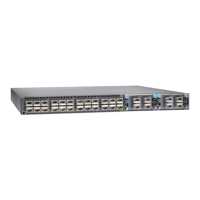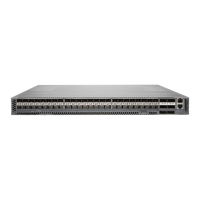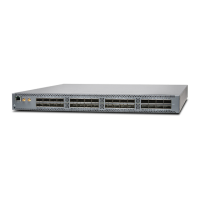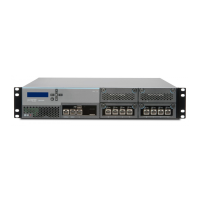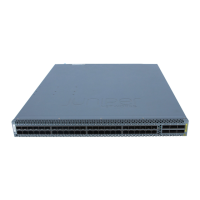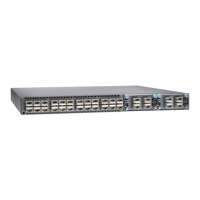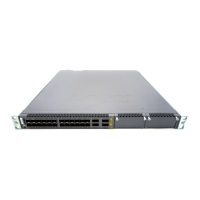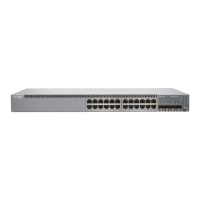6. Ensure that the device chassis is level by verifying that all the screws on the front of
the rack are aligned with the screws at the back of the rack.
7. With two mounting screws—and cage nuts and washers if your rack requires
them—slide the second rear mounting blade into the blade receptacle on the chassis,
and secure it to the rear of the rack by tightening the screws. You might need to loosen
and adjust the first mounting blade to install the second blade.
Four Mounting Rails Procedure
To mount the device on four posts in a rack using a four -rail kit:
1. Attach the ESD grounding strap to your bare wrist and to a site ESD point.
2. Decide whether the management end of the device or the ports are to be placed at
the front of the rack.
3. Align the holes in the mounting rail with the button fasteners on the side of the device
and slide the holes over the fasteners to click into place. See Figure 31 on page 80 to
see the proper alignment.
Figure 31: Attaching a Mounting Rail to the QFX3500
4. With three mounting screws—and cage nuts and washers if your rack requires
them—attach the mounting rail to the device. Tighten the screws.
5. Repeats steps 3 and 4 on the opposite side of the device. One end of the device now
has front facing mounting holes, the other end none.
6. With two mounting screws—and cage nuts and washers if your rack requires
them—attach one of the rear installation blades to the rear of the rack at the point
where you want to mount the device. Tighten the screws. The blade helps support
the rear of the chassis. You install the second rear installation blade after securing
both front mounting brackets. See Figure 29 on page 79 for detail on installing the
rear blade.
7. Grasp both sides of the device, lift it, and position it in the rack so that the blade
receptacle at the rear of the chassis catches and slides onto the installation blade.
See Figure 32 on page 81.
Copyright © 2017, Juniper Networks, Inc.80
QFX3500 Device Hardware Documentation
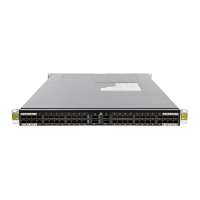
